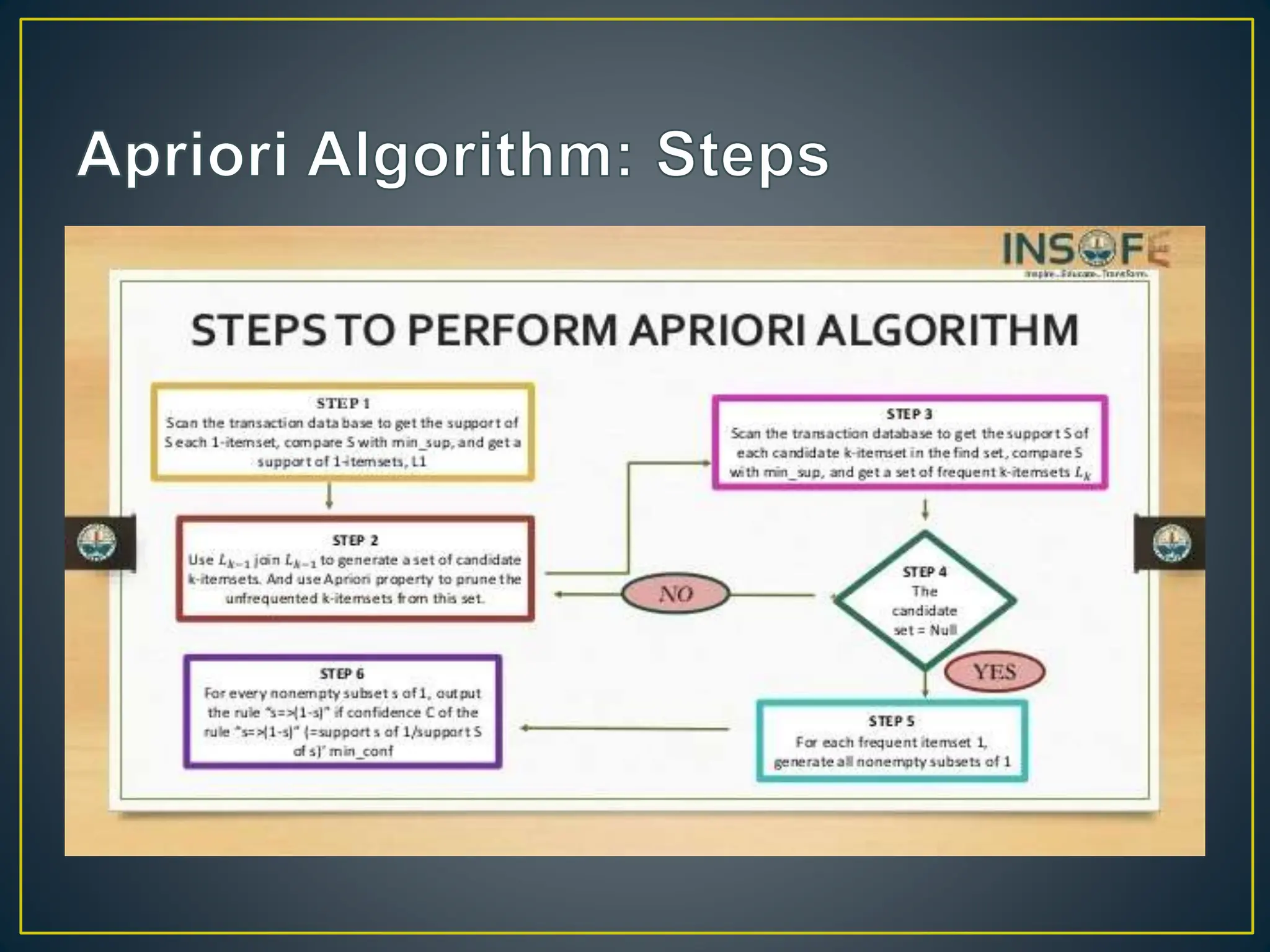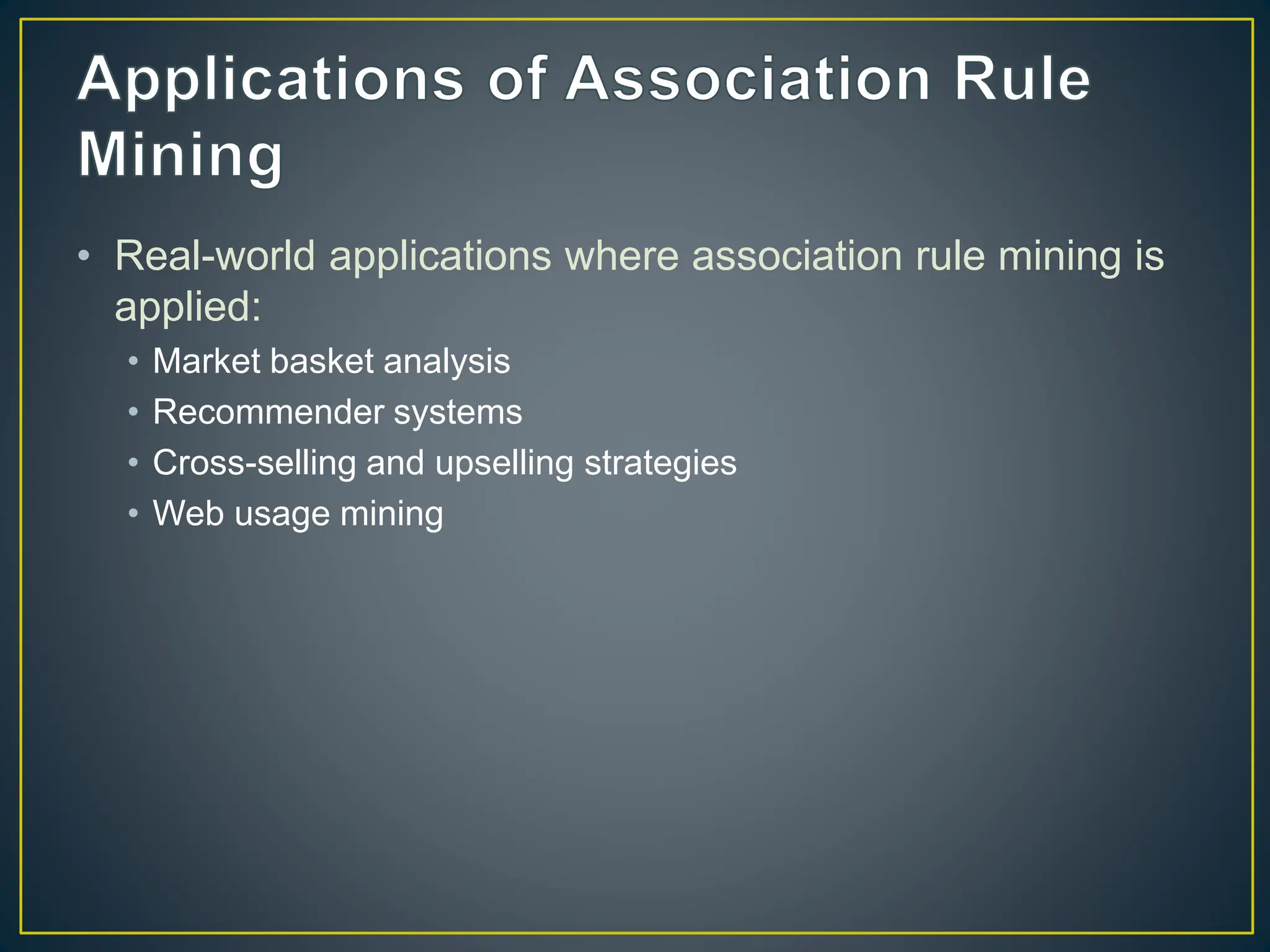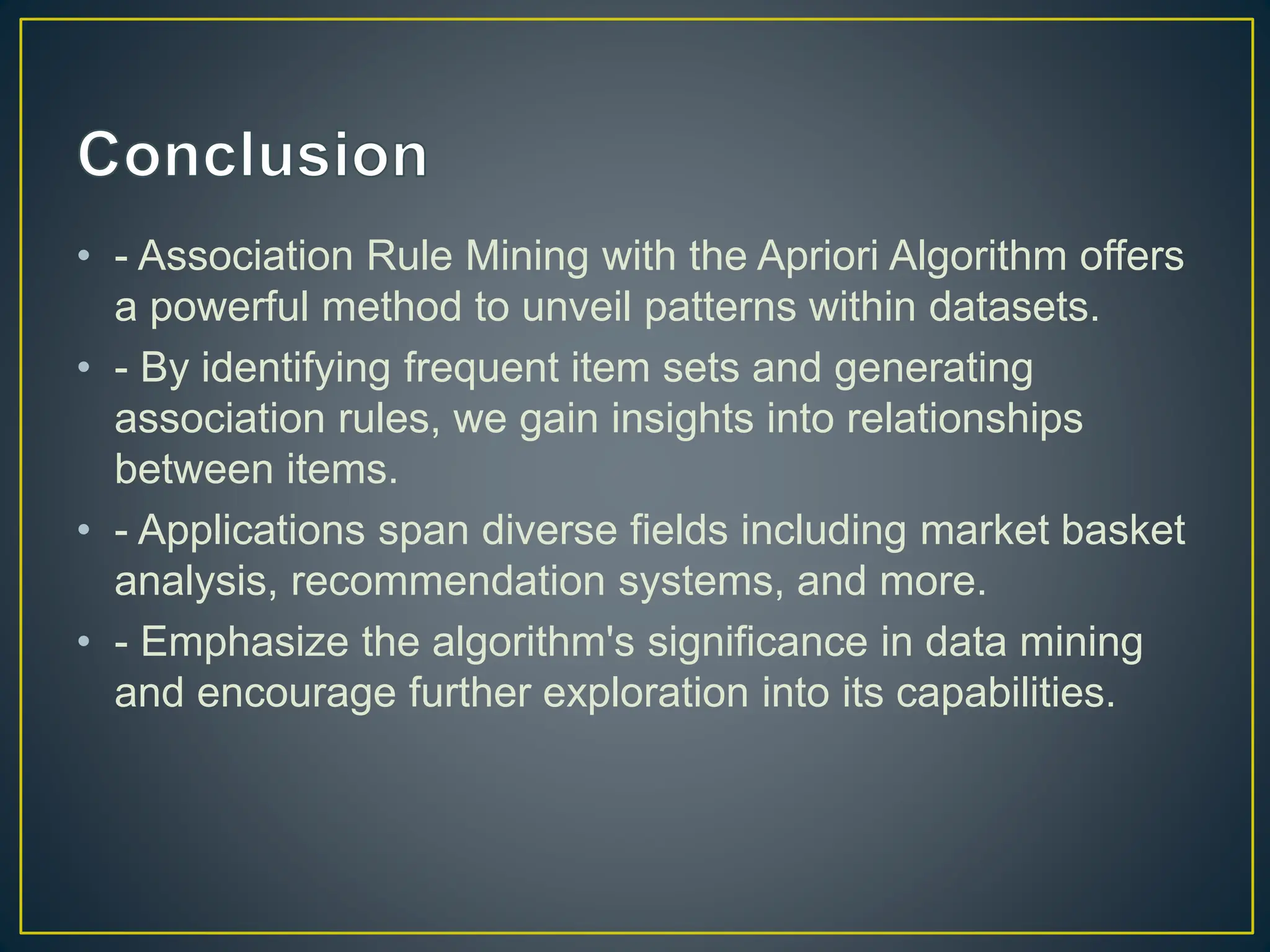Association rule mining is a technique that identifies patterns between items in large datasets. It is important for revealing relationships in data, particularly for market basket analysis of customer purchasing behavior. The Apriori algorithm is a method that iteratively generates and prunes candidate item sets based on minimum support to discover high support association rules between co-occurring items.









